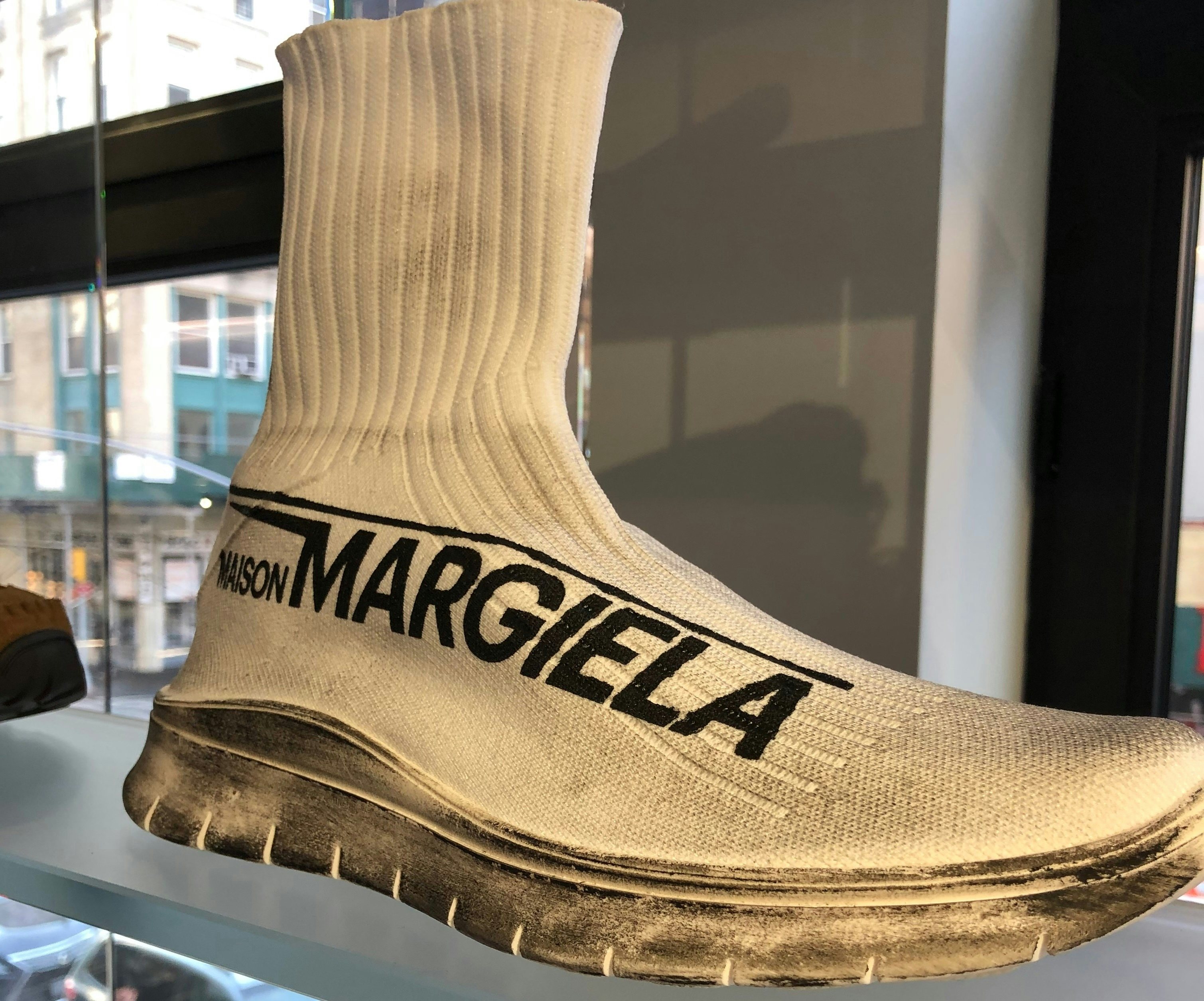China is home to the world’s youngest luxury consumers — sophisticated “digital natives” who have grown up pampered in one-child families. From daily phone payments for school lunches to high-end luxury online purchases, it’s always digital first for Generation Z. With this, however, comes more potential for disruption than traditional luxury brands have ever seen, and it’s something they need to prepare for.
Disruption can give opportunities to companies: a way for them to enter the market at a different angle. That’s exactly what the luxury brand Gray, which was recently founded by two college students in Singapore, has done. The brand’s CEO, Kevin Wu, is hell-bent on bringing radical, future-forward ideas about luxury to his already tech-obsessed generation of consumers. Consequently, his team just launched the first luxury crypto-wallet (in collaboration with Trezor, a maker of cryptocurrency wallet hardware) for items priced at 1,000 or more — price points that are far above most luxury wallets working with traditional banknotes. At a time when most luxury managers have close to zero experience with cryptocurrencies, young companies like Gray are daring to think differently in order to build up new markets: the definition of disrupting.
A similar tendency to innovate is currently sweeping through the sneaker market as well. With roots in skateboarding, the Venice Beach-based brand No. One has set themselves up to disrupt the shoe market with their bespoke sneakers made with the finest leathers available and using traditional dress shoemaking techniques. The company’s online collection “drops” has been selling out in minutes, and their shoes reach consumers from all over the world.
But this Gen Z-driven sneaker hype is only just beginning. Looking at the ever-increasing offerings from brands like Off-White, Gucci, Louis Vuitton, Balenciaga, and even Adidas and Nike with their high-tech and high-end lines, we get an idea of how much more disruption we should expect in the luxury shoe business in the future. Fortunately for the industry, shoe creativity seems to have no limits. Take Maison Margiela’s dirt sock sneakers, for example -- a shoe that stretches the idea of what most people consider “luxury.” But when I showed them to a sneaker-obsessed Gen-Z friend, she quickly stated, “They are dope!”

Gen Z’s tastes disrupt the luxury business as much as their tech-savvy natives, and those tastes have implications on their point-of-sale preferences. Their feeling is that the time of boring and arrogant luxury stores is over. These “temples” — where merchandise is hidden behind glass counters with grim-looking sales personnel hovering around — are made to impress but not to immerse. Instead, the youngest generation of consumers demands shopping experiences that make them feel comfortable; places that inspire them and where they feel “at home.” Therefore, don’t be surprised that you can now buy ice cream in the luxury shoe store Kith or that you can listen to hip-hop at Opening Ceremony, both of which are major disruptors in Gen Z-oriented luxury retail and are located in New York City. The theory is that if consumers are digital first, then brick-and-mortar stores need to be experiential first, otherwise, they have no reason to exist for these consumers.
Thus, traditional luxury, premium, and lifestyle brands need to reconsider their approaches when it comes to creating consumer experiences. They also need to beware of ill-considered attempts — marketing failures will only erode brand equity as they won’t feel authentic to consumers.
Instead, a company needs to undergo a strict assessment of how they’re positioned in the eyes of consumers. This is not an easy task; even with leading brands, I find a lot of room for improvement. During a recent visit to Adidas’ Hong Kong flagship store, which employs a traditional store layout that’s less contemporary than newer brands, I noticed that it was empty at rush hour, while many Gen Z-geared indie stores nearby were overflowing with shoppers. It’s a clear sign that some sort of action is needed from Adidas.
But these miscues aren’t limited to sports apparel or sneaker brands. Just a short distance from the Adidas store is Mercedes-Benz’s Hong Kong “Mercedes Me” space. Here, the luxury car brand is using a lifestyle concept to try to connect with younger urban consumers in a context that’s vastly different from a traditional car dealership. The idea was to combine a café, a casual restaurant, a car showroom and a retail space for Mercedes-branded accessories into one holistic shopping experience, but what’s striking is how none of these components connect to each other.
Inside the store, a two-tone 250,000 Mercedes Maybach is squeezed into one corner, looking shockingly miscast given the setting. The café and restaurant areas feel out-of-place with their strange mixes of colors, materials, and props, most of which have no association with the Mercedes brand. But the worst part is the accessories store, where cheaply-made brand charms and plastic iPhone cases were on offer for about 10. I left feeling completely confused about what the Mercedes brand even stands for — was this a self-confident luxury brand, a mediocre café, or a cheap accessory shop? There was no “brand feel” nor was there anything inspiring or authentic. Executions like this won’t give Mercedes an edge in luring a young, urban target group because it makes the brand look disconnected from what younger consumers expect — and actually get — from more informed brands.
Another example of a failed attempt to become more relevant to Gen Z and millennials is the recent launch of Louis Vuitton’s in-ear headphones. In my view, this execution represents a common problem in luxury: Priced at 1,000, the headphones are technically and aesthetically identical to headphones of a common headphone brand, save for an LV sticker glued on them and a pumped-up price of 1,000. That’s a staggering 700 more than an identical brand! There’s neither additional craftsmanship nor anything else that the Louis Vuitton brand adds in terms of value. Because of this, a simple Google search reveals consumer comments decrying the headphones as a “scam.” This isn’t surprising, as the internet’s youngest consumers are also the most discerning. Brand actions like these look desperate while weakening the credibility and equity of the entire brand. It’s good to remember that incompatible line extensions always weaken brand perception — they are never just neutral. That’s what makes them so dangerous.
With this in mind, how can a brand best manage disruption from younger consumers? When I advise luxury and lifestyle brands on how to manage a consumer-centric transition, how to increase their relevance among Generation Z and millennials, and how to envision their “store of the future,” I tell them that their most important need is to have 100-percent clarity about what their brand stands for, both rationally and emotionally. Brands need to first understand how they want to inspire consumers, and then all the following measures and actions must follow those definitions. While it sounds easy to do, I see many brands struggling, especially when it comes to marketing to China’s young and demanding luxury consumers. Their sophistication is often sorely underestimated by traditional brands and managers unfamiliar with the country, which gives a window to authentic new brands that have a genuine Asian mindset and born from within this desirable target group. Those brands are necessarily built around authentic values, so only brands that can create relevant and authentic messaging across all measures and touchpoints will compete with these more authentic and agile brands for Gen Z’s dollars. Those that don’t are relying on luck.
Daniel Langer is CEO of the luxury, lifestyle and consumer brand strategy firm Équité. He consults some of the leading luxury brands in the world, is the author of several luxury management books, a regular keynote speaker, and holds management seminars in Europe, the USA, and Asia. Follow @drlanger


